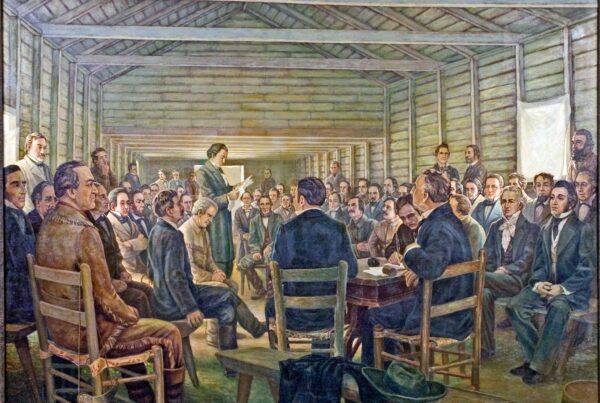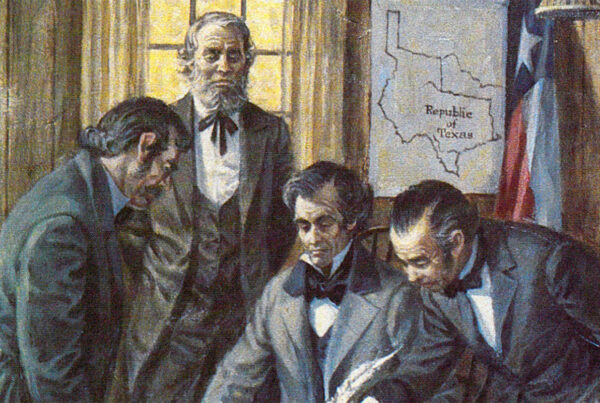Historical Context
The Texas Declaration of Independence, adopted at Washington‑on‑the‑Brazos on March 2, 1836, formally severed ties with Mexico and proclaimed the creation of a sovereign Republic of Texas. The document drew heavily on the philosophical language of the United States Declaration of Independence, asserting the right of revolution in response to governmental tyranny. It accused the Mexican government—under General Antonio López de Santa Anna—of centralizing power, dismantling the federalist Constitution of 1824, and violating the political and civil rights of the Anglo-American settlers who had been encouraged to colonize Texas under earlier Mexican law.
Though adopted in the midst of military crisis—just days before the fall of the Alamo—it marked the birth of Texas as an independent republic. Within days, the same convention adopted the Republic’s constitution, establishing a new government that would last until Texas’ annexation by the United States a decade later.
The declaration was signed by sixty men. Most of the signatories were U.S.-born Anglo settlers, while three were Hispanics—two native-born Texans (José Antonio Navarro and José Francisco Ruiz) and one, future vice president Lorenzo de Zavala, who was born elsewhere in Mexico. This composition reflected the decade-long influx of Anglos into Mexican Texas, alongside an enduring Tejano political presence. Although outnumbered, the participation of these prominent Hispanic figures underscored that resistance to Santa Anna’s centralization was a shared concern, uniting diverse communities in support of independence.
Full Text of the Texas Declaration of Independence
Note: Headings added for readability. The original document was written as a continuous statement without formal sections.


